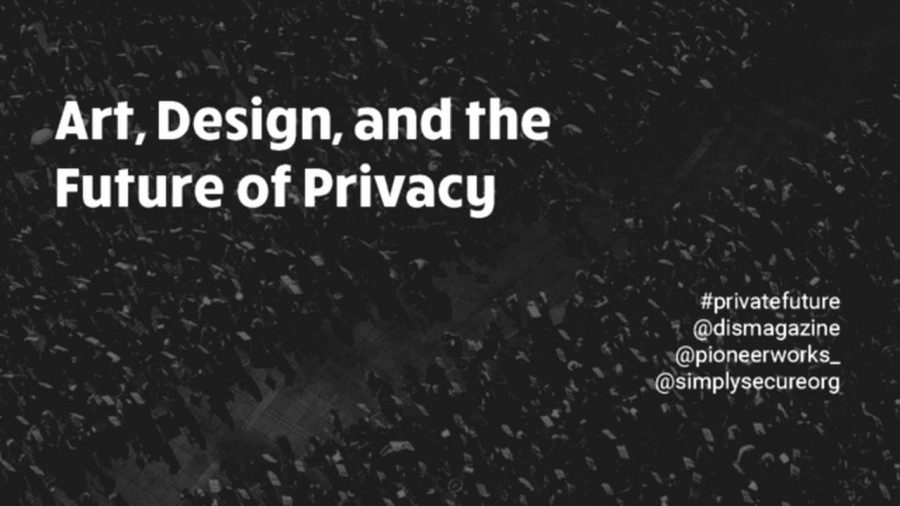Pioneer Works in Red Hook, Brooklyn is a gorgeous sort of art, exhibition, studio space that has a lot of interesting stuff going on. You have fellows upstairs that are making and creating art. You have a bunch of bands that play here. It’s kind of an open community space. It’s really cool. And they have been generous enough to allow us to host this event and speak to a community that doesn’t usually get addressed on these topics but that all of us here feel are really integral to being able to build technologies that actually respect privacy, being able to imagine what they look like, being able to actually critique what the stakes of those technologies are.
You don’t need a CS degree to know how they impact your life, so how do we start examining those impacts and then leading with an understanding of what we actually want to build, how we want to build it, and letting the imaginative capabilities of all of these people drive that. The way in which architecture and network technologies and privacy intersect, there’s a lot of discussion around the Internet of Things. We have an architect here who’s able to cover like, “I am a very well-respected architect but no one tells me about security or privacy. I’m sold devices, I build houses.” That’s a huge problem area.
We have librarians talking about…somebody who runs the New York Public Library’s prison library program talking about the way in which the narrative around privacy and consumer technologies doesn’t cover the kind of state surveillance and other privacy-invasive techniques that are happening in institutions like prisons.
How would you build the capacity to say no to certain technologies? Like, I don’t want tracking in my community. I don’t want predictive policing. What does agency look like in that context, and how often are the people who actually have to deal with the effects of technologies consulted.
So we have a whole panel here about the problem space of encrypted communications. We can build things PGP. Other examples that technically work in a kind of vacuum, but don’t work the way that people expect communications technologies to work. So what do we need to do to get to a place where we’re actually building to the requirements of humans, not to the requirements of cryptographers?
One of the things we need right now, we have an area of practice around this technology. There are people who really know how to build it, how to make it, how to think about it in terms of implementation. We don’t have a culture around this. So what we need is a culture of critique, a culture of design, a culture of imagination. So we can actually begin incorporating a much broader swatch of thinking into our development practices. Simply Secure is an organization I helped found that I care a lot about and I think is doing great work. I would check out Simply Secure.
I would also start understanding that what you want, what you’re confused about, what you think is weird about a lot of the technologies that seem to just permeate our lives without our permission, without our understanding…your voice there is really important in helping shape that. You shouldn’t feel precluded from having a critical view, from having agency, just because you didn’t study computer science at college.
I would look at simplysecure.org. They’re an organization that’s really trying to do this. I would look at a number of the tools that they support. I would look at the work of a number of the individual artists and contributors here. I would look at Open Whisper Systems and their Signal and TextSecure apps. [since combined] I would look at Guardian Project. They also make encrypted communication technologies.
